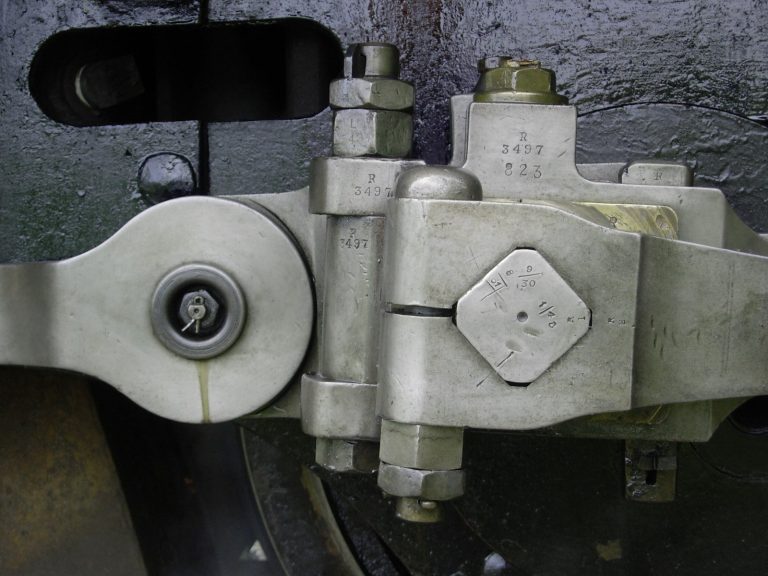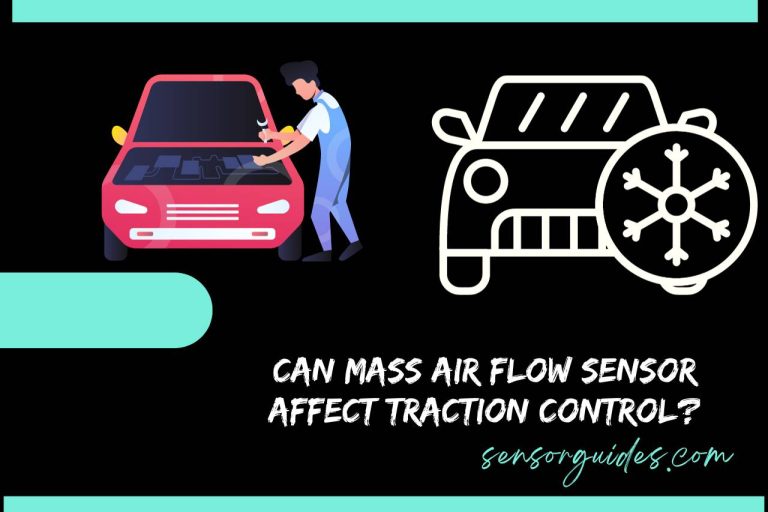From Stumble to Surge: Transform Your Car’s Performance with Map Sensor Replacement Mastery! – 2023
Introduction
The Crucial Role of Map Sensors
In the tricky global of automotive engineering, a multitude of sensors play pivotal roles in ensuring surest engine overall performance and fuel efficiency. Among those unsung heroes, the Manifold Absolute Pressure (MAP) sensor sticks out as a critical factor of the engine control gadget. This unassuming tool silently video display units the pressure within the intake manifold, imparting vital data that dictates gas delivery and ignition timing, in the long run influencing the engine’s normal performance and emissions.

Signs Your Map Sensor Replacement
While MAP sensors are designed to bear the trials of every day riding, they are no longer proof against put on and tear. Over time, factors which includes environmental contaminants and mechanical vibrations can compromise their accuracy, main to a number of signs and symptoms that indicate the want for alternative. Common symptoms of a failing MAP sensor consist of:
- Engine Hesitation or Stalling: A faulty MAP sensor can misinterpret the air consumption strain, causing the engine to hesitate or stall all through acceleration or under load.
- Reduced Fuel Efficiency: Inaccurate stress readings can cause an improper fuel-air mixture, resulting in reduced gas economy and extended emissions.
- Illuminated Check Engine Light: The engine manage unit (ECU) monitors the MAP sensor’s output, and any discrepancies can also cause the Check Engine Light, signaling a capacity fault.
- Rough Idle or Erratic Engine Performance: A faulty MAP sensor can disrupt the engine’s air-gas ratio, causing hard idling, inconsistent electricity shipping, and unpredictable engine conduct.

Understanding Map Sensors
What is a Map Sensor?
A MAP sensor, or Manifold Absolute Pressure sensor, is a essential element of an internal combustion engine’s electronic control gadget. It constantly monitors the strain within the consumption manifold, the passage that grants air to the engine’s cylinders. This strain reading, known as manifold absolute stress (MAP), affords critical facts to the engine manipulate unit (ECU), allowing it to optimize fuel injection and ignition timing for most efficient overall performance and emissions.
How Do Map Sensors Work?
MAP sensors normally hire one among operating standards:
- Piezoelectric Sensors: These sensors make use of a piezoelectric material that generates an electrical sign in reaction to strain adjustments. As the consumption manifold stress will increase or decreases, the piezoelectric element produces a corresponding voltage output.
- Membrane Sensors: These sensors appoint a thin, flexible membrane that deflects under varying stress. The deflection of the membrane is measured electronically and transformed into a voltage sign that displays the manifold absolute strain.
The ECU gets the voltage sign from the MAP sensor and translates it as a measure of the air density getting into the engine. This facts is then factored into the engine’s manage algorithms, adjusting gas injection and ignition timing to maintain the best air-gas ratio and optimize engine overall performance.

Importance of Map Sensors in Engine Performance – Map Sensor Replacement
MAP sensors play a crucial role in ensuring green and powerful engine operation. Their ability to as it should be degree manifold stress gives the ECU with vital facts for specific fuel injection and ignition timing. This, in turn, contributes to:
- Optimal Fuel Efficiency: By making sure the proper fuel-air mixture, MAP sensors assist obtain the best gasoline efficiency viable under varying load situations.
- Reduced Emissions: Proper gasoline transport and ignition timing minimize the formation of dangerous pollutants, contributing to cleanser emissions.
- Enhanced Engine Performance: Accurate MAP readings allow the ECU to optimize engine timing and air intake, main to improved strength output and responsiveness.
- Smooth Engine Operation: MAP sensors assist keep a constant air-gasoline aggregate, making sure smooth engine operation and stopping hesitation or stalling.
In conclusion, MAP sensors are imperative additives of contemporary automotive engines, contributing to progressed fuel efficiency, decreased emissions, enhanced performance, and smooth operation. Their potential to as it should be screen manifold strain affords precious facts to the engine control gadget, making sure optimum engine performance below a extensive variety of driving conditions.
Basic characteristics of a failed MAP sensor
A defective MAP sensor can take place itself in quite a few signs and symptoms, a number of which can be diffused or easily ignored. However, by being privy to those capability signs and symptoms, you may pick out potential problems early on and prevent extra intense problems down the street.
Irregular Engine Idling
A rough or erratic idle is a commonplace indication of a faulty MAP sensor. The sensor’s misinterpretation of air intake stress can motive the engine to idle unevenly, with RPM fluctuations and an universal choppy jogging revel in.
Decreased Fuel Efficiency
Inaccurate MAP readings can cause an incorrect gas-air aggregate, ensuing in reduced gas economy. The engine may additionally eat greater fuel than standard to acquire the identical performance, substantive as a decrease in miles in line with gallon.
Engine Misfires
Misfires occur whilst one or extra engine cylinders fail to fire well. A faulty MAP sensor can reason misfires by presenting incorrect fuel injection timing or air consumption facts, disrupting the combustion technique and leading to rough engine operation.
Hard Starting or Stalling
Issues with fuel injection and ignition timing can also cause difficulty starting the engine or cause stalling at some stage in operation. A defective MAP sensor can make a contribution to these issues by providing erroneous strain readings, disrupting the engine’s beginning or idling tactics.
Check Engine Light Illumination
The engine manage unit (ECU) monitors the MAP sensor’s output and can trigger the Check Engine Light if it detects discrepancies or odd readings. This mild serves as a trademark that a potential fault exists, and the MAP sensor have to be considered as a possible wrongdoer.
Using Diagnostic Tools to Confirm Map Sensor Problems – Map Sensor Replacement
While the symptoms mentioned above can offer clues about a capability MAP sensor problem, a definitive diagnosis often requires the use of specialized diagnostic equipment.
OBD II Scan Tool
An OBD II test tool may be plugged into the automobile’s diagnostic port to retrieve trouble codes stored through the ECU. These codes can factor to specific additives or systems that may be inflicting problems, inclusive of the MAP sensor.
Digital Multimeter
A digital multimeter can be used to measure the voltage output of the MAP sensor. Comparing the measured voltage to acknowledged specs can assist decide if the sensor is offering correct readings.
Vacuum Gauge
A vacuum gauge can be related to the consumption manifold to measure the real stress. Comparing the vacuum gauge analyzing to the MAP sensor’s output can assist become aware of any discrepancies or sensor malfunctions.
Professional Diagnostic Services
For a greater thorough and accurate prognosis, it’s far encouraged to seek advice from a qualified automobile technician or restore shop. They have the information and specialized diagnostic system to pinpoint the precise purpose of the hassle and propose the right course of movement.
Choosing the Right Map Sensor – Map Sensor Replacement
OEM vs. Aftermarket Sensors
When changing a defective MAP sensor, you may come upon principal options: Original Equipment Manufacturer (OEM) sensors and aftermarket sensors.
OEM sensors are manufactured by using the unique gadget producer, the identical business enterprise that produced your automobile. They are designed to fulfill the exact specs of your vehicle’s engine and are considered the very best great choice. However, they frequently come at a better rate factor.
Aftermarket sensors, alternatively, are synthetic through 1/3-party groups. While they may not be exact replicas of the OEM sensors, they can still provide dependable performance and are commonly more affordable.
Factors to Consider:
- Budget: OEM sensors usually value more than aftermarket sensors. If fee is a main concern, an aftermarket sensor can be a appropriate choice.
- Quality Assurance: OEM sensors undergo rigorous nice manage measures, ensuring their overall performance and compatibility with your automobile. Aftermarket sensors might also vary in best, so it’s vital to choose a reputable emblem.
- Vehicle Specificity: Ensure the aftermarket sensor is especially designed on your car’s make, version, and engine specs.
Compatibility with Your Vehicle Make and Model
Choosing a MAP sensor well matched along with your automobile’s make, version, and engine is crucial for correct functionality and most efficient overall performance.
Identifying Your Vehicle’s Specifications:
- Vehicle Make and Model: Determine the exact make and model of your automobile.
- Engine Specifications: Refer for your owner’s manual or vehicle documentation to pick out your engine’s particular traits, such as engine size, kind, and yr of manufacture.
Matching the Sensor to Your Vehicle:
- Cross-Reference Charts: Utilize online cross-reference charts or consult with automobile elements outlets to match your automobile’s specs to compatible MAP sensors.
- Manufacturer Recommendations: Check the suggestions from the MAP sensor producer to make certain compatibility along with your automobile.
Quality and Reliability Considerations
When selecting a MAP sensor, don’t forget factors that make a contribution to long-time period performance and reliability:
- Manufacturer Reputation: Choose a MAP sensor from a good emblem regarded for producing remarkable automotive additives.
- Customer Reviews: Research patron evaluations and comments on particular MAP sensor fashions to gauge their performance and reliability.
- Warranties and Guarantees: Check the assurance insurance and guarantees supplied by means of the producer, ensuring good enough protection in case of defects or malfunctions.
Conclusion – Map Sensor Replacement
The Manifold Absolute Pressure (MAP) sensor performs a critical role in ensuring gold standard engine overall performance and gas performance in contemporary inner combustion engines. By as it should be tracking the stress in the intake manifold, the MAP sensor gives essential statistics to the engine control unit (ECU), permitting it to precisely control gas injection and ignition timing for most desirable combustion.
A defective MAP sensor can manifest itself in various signs, along with abnormal idling, reduced fuel performance, engine misfires, and difficult beginning or stalling. Diagnosing MAP sensor problems often requires specialized gear, inclusive of an OBD II scan tool, a digital multimeter, or a vacuum gauge.
Proper MAP sensor upkeep can expand its lifespan and prevent overall performance troubles. Regular cleaning, inspections, and addressing different elements affecting MAP sensor overall performance can preserve your engine jogging easily and correctly.
FAQs
What are the signs and symptoms of a faulty MAP sensor?
Common signs and symptoms of a defective MAP sensor consist of:
- Irregular idling
- Decreased gasoline efficiency
- Engine misfires
- Hard starting or stalling
- Illuminated Check Engine Light
How can I diagnose a faulty MAP sensor?
Diagnosing a defective MAP sensor often requires specialized gear, which include an OBD II experiment tool, a virtual multimeter, or a vacuum gauge. These equipment can help discover discrepancies within the MAP sensor’s readings or electric alerts.
How do I replace a faulty MAP sensor?
Replacing a defective MAP sensor normally includes the subsequent steps:
- Locating the sensor within the automobile
- Disconnecting its electrical connector and vacuum lines three. Removing the antique sensor
- Installing the new sensor
- Securing all connections
It is essential to consult your automobile’s repair manual for unique commands and processes.
What are the benefits of everyday MAP sensor maintenance?
Regular MAP sensor upkeep can:
- Extend the lifespan of the sensor
- Prevent performance problems and engine troubles
- Improve gasoline efficiency and emissions
How frequently must I smooth my MAP sensor?
The frequency of MAP sensor cleaning depends on the automobile’s running situations. Generally, it is recommended to clean the sensor at least as soon as annually.




